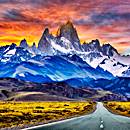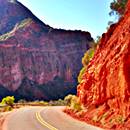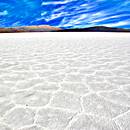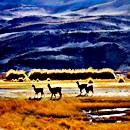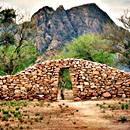Plan your Motorbike Trip
Ruta 40 on a motorbike
To travel on a motorcycle is an adventure in itself: explore new roads, new horizons, feel alive with the wind in your face. It is about traveling far and also inwards, getting to know yourself better.
One of the Best Motorcycle Journeys in the World
According to Outside Magazine Argentina's Ruta 40 is one of the "World's Best Four motorcycle journeys":

Top 4 Motorbike Journeys
- Ruta 40, Argentina
- Grossglockner High Alpine Road in Austria
- Manali-Leh Road, India
- Route 6, New Zealand
We'd also include the classic Route 66 (U.S. 66) in America
Below we will see how to prepare for your motorcycle trip.
Some History
El Che Guevara on Ruta 40
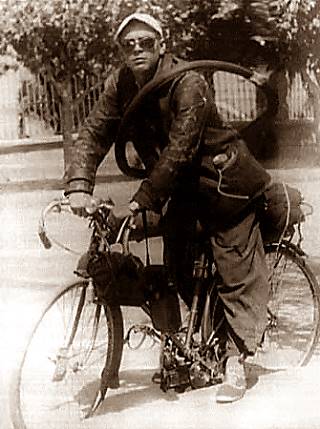
Che Guevara on his moped, 1950
The exact itinerary is unknown, but we do know that Ernesto Guevara, better known as "Che" Guevara, visited the provinces of Santa Fé, Córdoba, San Luis, Santiago del Estero and several of the provinces through which Ruta 40 is aligned: Salta, Tucumán, Jujuy, Catamarca, La Rioja, San Juan and Mendoza.
We also know that he rode from Mendoza to San Juan along Ruta 40 but couldn't reach La Quiaca due to the summer rains which floded several rivers.
Ernesto Guevara is one of the charismatic Argentine figures of the late 1950s ad 1960s. He did a second and much longer journey which was portrayed in the movie "The Motorcycle Diaries", a trip which would take him across Latin America: through Chile, Peru, Colombia, Ecuador, Venezuela and Panama. He ended up in Miami, USA with his friend Alberto Granado in 1952.
This journey also found him on Ruta 40, in Bariloche (Spanish webpage) on his way into Chile.
He rode a 1939 500 cc Norton which he named "La Poderosa II" (The powerful III).
Pero un par de años antes, a la edad de 22 años hizo su primer viaje en moto y durante el mismo también recorrió la Ruta 40. En sus propias palabras:
The photograph shows him on his moped, which had a "Micrón" engine built by Meccanica Garelli de Milán, Italy. The photo was published on May 19, 1950 as an advertisement by Garelli.
You and your Motorcycle
You should be well acquainted with your motorcyle, know how it handles on the highway, which speeds are the ones that make you feel comfy.
How it feels when its loaded with your gear, how does it respond on gravel or dirt roads.
You, the key component
Bear in mind that you will be riding during long days in lonely places, maybe 6 or 8 hours each day. You have to be up to the challenge :
- The journey can be very tiring, even painful if you don't plan it correctly.
- You know your limits: so plan your daily legs accordingly. How many hours will you ride? How many times will you stop to stretch, relax, have a cup of coffee?
- When you feel tired, you also feel stressed, and you enjoy less. It also distracts you, and losing focus is dangerous.
- The weather and the environment can wear you down (rain, dust, heat, cold, side wind, head wind, frost): dress accordingly, dress for safety: helmet, footwear, jacket.

Planning your Journey
You already know where you want to go (Ruta 40), now it is time to plan your trip:
- Define how many hours each day you plan to ride: 8? 6? 12? and based on the type of road surface (gravel, paved) you can get an idea of your average speed.
- With the time and the speed you can calculate the distance that you will cover each day.
- Allow for stops: to refuel, to take some photos, to eat, to relax (you should stop for at least 5 minutes every 200 km of riding), etc.
- The distance will let you plot your journey: the places where you will stop to spend the night.
This rough outline can be improved and refined, perhaps spend a day or two at some town along the road or take a side trip to visit some remarkable landmark.
We have many tips and suggestions at our: > > Plan your Trip webpage
Alone or as part of a group?
If your journey is one of personal discovery you should do it alone. It gives you flexibility, independence and quality time with yourself.
But riding in a group is great: you have company, you can share the experience and if problems arise you can count on the group's help.
Traveling with a group does require some basic rules to avoid conflicts later during the trip.
Tips for a "Solo" Journey
Be independent but sensible:
Share your itinerary
Let friends and family have your itinerary just in case there is an emergency.
Travel light
Take only the basics. Use critical eye to go over what you are going to carry with you and leave the superfluous behind.
Emergency contacts
Carry a paper list in your wallet with name, address, phone, mobile of people to contact in case you have an accident. Include your travel insurance details, medical information (allergies or medical conditions).
There are apps that can track your course and you can share this with friends and family. Bear in mind that solitary places along Ruta 40 do not have mobile coverage or inernet.
Look after yourself
Eat well and keep hydrated. Hunger and dehydration can distract you and make you feel sleepy. Keep alert and health.
Your Motorcycle
Your motorbike should be comfortale and reliable:
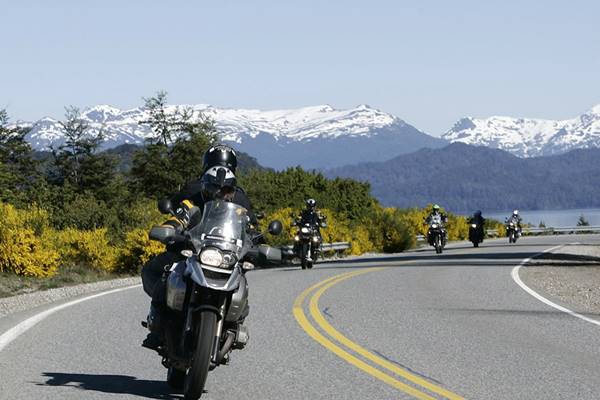
- Seat. When you ride 8 to 10 hours each day a comfortable seat is fundamental: widen it, use high quality polyurethane or gel to absorb impacts and vibrations. Larger motorcycles have better seats.
- Reliability. It shouldn't break down. Have it checked by a mechanic before setting off on your journey, it should be in perfect conditions.
- Tires. Consider using multipurpose tires because Ruta 40 has it all: dirt, gravel and paved surfaces. To avoid premature wear, top up air pressure as indicated by the manufacturer.
- Autonomy. You should know how far you can ride on a full tank. Fill the gasoline tank every time you can. Find out where the next service station is located, ask the locals.
- Spares: What spares should you carry with you? You can't take them all but you should have the basic ones, enough to get to the next town and fix your motorcycle there:
- Flat tires: quite common and easy to fix, carry a tire sealant with you or a spare inner tube.
- Chain break: carry some linking links. Prevent breakage by keeping the chain and sprocket well lubricated. On gravel or dirt roads clean and grease on a daily basis.
- Cut break or clutch cables: carry spare cables with you, it is easy to repair.
- Tools: carry a small kit of useful tools to fix the hings mentioned above.
- Test your motorcycle to feel how it responds with full load (braking, maneouverability). Avoid surprises later on.
Your Personal Gear
What you take with you depends on the type of trip you will be taking: stopping at hostels, inns or hotels you will need different gear than if you plan to camp along the way.
The main issue is: lack of space, so, where do you put your gear?
Saddle Bags
- Saddlebags are the best option and if they are hard and waterproof, better still.
- Soft Saddlebags As they don't keep their shape, they should have some support system to keep them out of the rear wheel (very dangerous!)
- Rainproof: if the saddlebag isn't waterproof, use larg polyethlene bags to keep your stuff dry. Keep your rain gear handy so you can reach it quickly. Put wallet, mobile, documents inside a resealable bag (Zip-Loc).
- The right side saddlebag is the safest. It is opposite the traffic and easier to reach. Put the stuff you may need in an emergency in this bag.
- Backpack - Fannypack. For light or valuable stuff (mobile, documents, wallet, glasses).
Pack smartly: balance your cargo
- Pack carefully and minimize the space occupied by each item. Fold clothes tightly. Use all empty spaces.
- Put the most important stuff above: map, gloves, snack, it is pointless to pack and unpack each time you need them.
- Balance the weight, your gear should be evenly distributed and not move about and upset your bike's balance when you are riding it.
- Use cords to strap things down firmly.
- Don't block the air flowing into the engine. Make sure your lights are visible.
- Keep center of gravity low it will help you ride safely. The motorcycle's center of gravity is close to the transmission. The lower you place the weight of your gear, the better, specially in places like Patagonia with strong side winds.
- Travel light. Excess weight makes braking and riding harder and wears tires and suspension. Check the maximum cargo weight in the manual.
- More weight means more fuel. Save some money by traveling light.
- Protect the paint: Wax it and cover the friction points between luggage ad paint with duct tape or masking tape.
Things that you Must take with you
- GPS or Waze App. Paper map.
- Extra keys
- Personal toiletry kit and soap for washing your clothes.
Camping
Camping on a motorcycle journey can be an issue: you have to carry the tent, sleeping bag, cooking gear and food, which means at last some 60 lbs (30 kg) of extra weight.
It also requires time to unpack, set up camp, get your meal ready and, in the morning, lifting camp and repacking. It can take a couple of hours each day.
However it gives you freedom to stop wherever you want and is cheaper than stopping at hotels.
A longer list of Things to take with you
- Scarf
- Padlock and keys
- Mobile, extra battery, charger, adapter for local sockets
- Bathing suit
- Flashlight and batteries
- First Aid Kit
- Cap or Hat
- Plastic bags
- Water bottle
- Snacks
- Brush to clean the chain
- Anti-theft lock
- Helmet
- Boots
- Heavy gloves
- Sunglasses
- Cocoa butter and Sunscreen
- Windjammer and hoddie
- Waterproof rain suit
- Cash, Credit and Debit cards
- Duct tape
- Ear plugs
- Paper towels
- Tire pressure gauge
- Lightweight gas stove and cannister
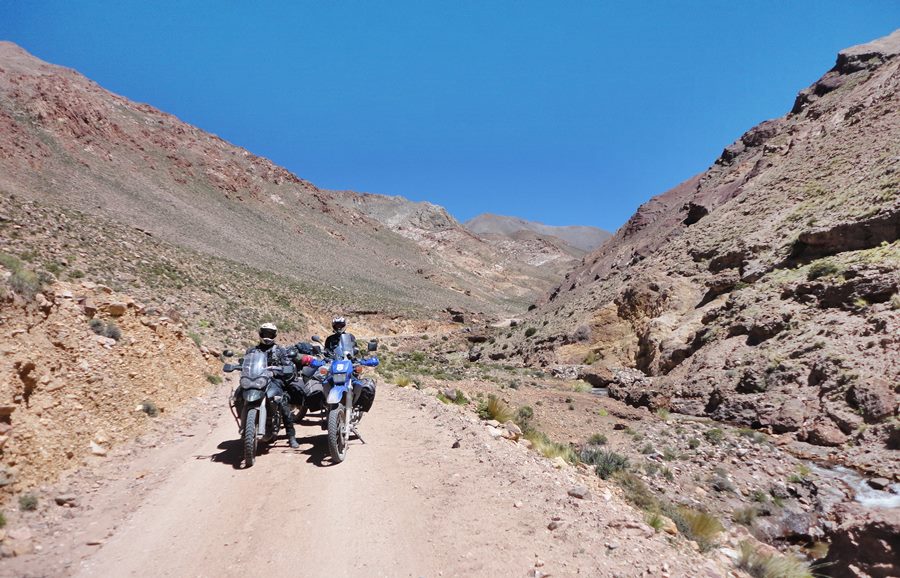
Clothes
You will be in your "riding" clothes 10 hours each day, and you will sleep another 8 hours, that leaves you with 6 hours of free time for using "normal" clothes: you won't be needing too many "normal" garments.
Clothes occupy space and add weight: 2 or 3 changes are more than enough: some long and short sleeved T-shirts, underwar, socks, shorts, crocs, jeans.
Fuel
Know how far you can ride on a full tank with maximum load.
Keep your gasoline tank topped up.
Learn more: > > Service Stations along Ruta 40
Renting a motorcycle or booking a motorcycle tour
There are several tourist operators that offer motorcycle tours along Ruta 40, these are some:
- www.argentinamototours.com in Mendoza (Valle de Uco, Ischigualasto, El Payén and Ruta 40)
- r40moto.com, tours and longer excursions on motorbike in Patagonia.

Ride safely
Insurance
You and your motorcycle should be insured. Take travel insurance and make sure it covers your motorcycling trip, things can go wrong and you need insurance to cover the event (hospital, getting you home, etc.). Not all travel insurance covers riding a motorcycle abroad, so compare coverage and costs. You are required by Argentine law to enter the country with health insurance and must pay for medical services provided by government hospitals and health facilities.
Safety first
Drive safely, don't do reckless things, obey the rules of the road when overtaking or stopping.
Rest and keep focus. Riding for 6 hours under nasty weather conditions can sap your energy and distract you.
Be prepared for rain, sleet, side wind, dust, cold and heat.
Stop to rest, stretch, hydrate and eat something healthy (fruit, cereal bar).
Weather
Choose the best time of the year to ride Ruta 40, it will influence the gear and clothes that you will have to take with you.
- In the north, altitude makes the weather cooler even in summer. There are large day to night temperature swings.
- Summer is the rainy season in the north, with flash floods and sudden downpours.
- The strong dry and hot westerly wind that blows in Cuyo region, the Zonda can be an issue during winter and spring.
- In Patagonia the "Roaring Forties" is a persistent and strong wind that blows from the west in strong gusts throughout the year, complicating your ride.
- Snow, rain and ice in the southern sections of Ruta 40 from May to October.
Learn the best time to ride Ruta 40 > > When to Drive It webpage
Ask the locals
The local folks know their area so you can ask them about road conditions, weather and where to stop, fill your tank or catch a bite.
Police stations, tourist information centers and the provincial or national department of transportation posts can also be sources of useful information.
Legal requirements
Argentina's legal requirements for riding a motorcycle (Art 40. Ley de Tránsito 24.449) are:
- Carry your driver's license on you, your personal ID (Passport). The motorcycle's current valid "Technical Vehicle Inspection" certificate.
- Transport the legally approved amount of passengers
- Riders must wear approved helmets. If the motorcycle does not have a windscreen driver must wear goggles.
- Obligatory insurance
- Compliance with alcohol limit which depends on the jurisdiction which can be as low as zero. Best otpion: never drink and drive.
Hotels & Accommodation along Ruta 40
Find your room in each province along the highway
Find Lodging
>> Hotels in City of Salta
Hotels in each province along Ruta 40
Must-See stops near Ruta 40
>> Find your room in Salta Province


